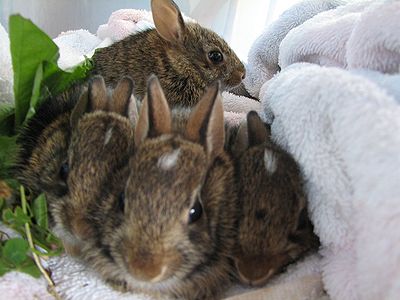There are viruses lurking everywhere, some benign or dormant, others deadly. Myxomatosis, a pox disease is on the loose, striking rabbits. It is almost always fatal. Myxomatosis is transmitted by fleas, mosquitoes, fur mites, black flies and other biting insects. Symptoms can be seen quickly – swollen, pink-tinged eyes and genitals, also the rabbit’s face […]
Rabbits
The domestic Rabbit originated with the European Rabbit. The Rabbit’s natural habitats are Europe, Africa and parts of Asia. There are more than 45 breeds of Rabbits. Different breeds have different personalities and characteristics. A female rabbit is known as a doe and a male rabbit is a buck. For show purposes, rabbits are divided into body types; Compact Body Type, Commercial Body Type, Full Arch Body Type, Semio Arch Body Type and Cylindrical Body Type.
Rabbits are small mammals in the family Leporidae of other Lagomorpha, and technically not rodents, although they are often classified together in pet shops and similar. They live in many areas around the world and they live in groups. A group of burrows is called a warren. Rabbits usually live in meadows, woods, forests, thickets and grasslands but they will also inhabit deserts and wetlands too.
As you know, rabbits have long ears. Their ears can be more 10cm long and the ears can adapt for detecting predators. Rabbits’ fur is long and soft. Rabbits also have two set of incisor teeth. The hind legs, longer than the front ones, are very powerful. The little tail resembles a powder puff. The medium length fur is very soft. Colors vary with the breed. Life span can be more than 10 years.
Rabbits are prey animals and will freeze and observe when they are confronted with a threat. They like to explore new territory.
Although rabbits are timid but they are so lovely, many people like them. I hope you will like them too.
Although it is popularly thought that rabbits eat a diet of mainly carrots and lettuce, in truth only 5% of their diet should be made up of fresh vegetables. In the wild they don’t eat primarily vegetables, and if they have too much it can cause diarrhea and tooth decay. They need to eat a lot of hay, around their size in hay per day, and also some kibble.
Rabbits are very social and must be kept in same sex pairs. It is important to spay a female rabbit, as otherwise they have a high chance of contracting uterine cancer and are unlikely to live beyond 4 years old. They enjoy being stroked. If they like you, they will groom you in return by licking you! They don’t usually like being picked up, so it’s good to let them hop over to you.
Rabbits should NEVER be housed with Guinea Pigs for the following reasons:
Rabbits are a lot stronger than guinea pigs, they can easily hurt/kill a guinea pig without meaning to, simply by kicking out with their back legs.
Also rabbits do tend to bully guinea pigs.
They also have differing dietary requirements, so unless you intend to feed them separately you will be neglecting one pet’s needs: Guinea pigs need additional Vitamin C in their diets or they can become sick. But rabbits don’t, and too much vitamin C can make a rabbit ill.
This is the most important reason: Rabbits carry bordatella, a disease which is fatal to guinea pigs.

E. Cuniculi in Rabbits
E. Cuniculi (Encephalitzoan cuniculi) is a tiny protozoan, a one-celled organism. It is found in the environment and can affect animals and humans. In order to survive it has to live within a host which is mainly a rabbit. Your rabbit can become infected with E. Cuniculi several ways – from mother rabbit passing it […]
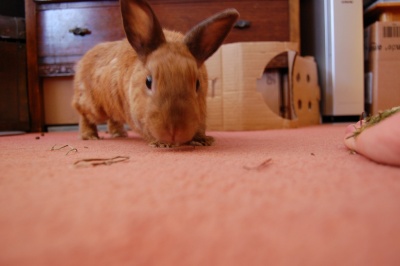
A Rabbit’s Diet
Bugs Bunny, a Warner Bros. character, has made carrots a popular food for rabbits. But rabbits should not live on carrots alone nor too many of them. They need a variety of fruits and veggies for good health. The mainstay of a rabbit’s diet is hay or grasses with the addition of a small amount […]
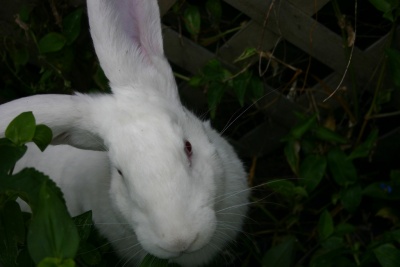
Safe Plants and Woods for Rabbits & Guinea Pigs
The ASPCA offers lists of what rabbits and guinea pigs can and can’t eat. Here are some plants they CAN eat: Alfalfa, basil, borage, checkweed, coltsfoot, dandelion, goldenrod, green clover, groundsel, mallow, plantain, yarrow, asters, marigolds, nasturtiums, sunflowers and sweet peas. These are some plants that are toxic and they CANNOT eat: Buttercups, deadly nightshade, […]
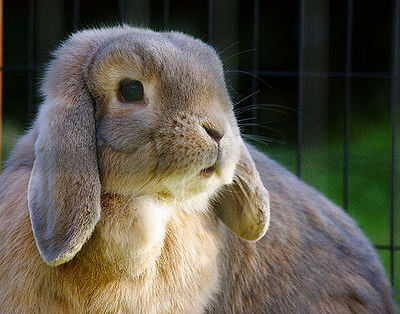
Rabbit Pasteurella
Rabbit Pasteurella, known as snuffles, is a serious upper respiratory disease that requires the quick attention of a veterinarian. Snuffles is caused by Pasteurella multocida, a bacteria. Although many rabbits may be carriers, it does not cuase any problems in those whose immune systems are healthy and can fight off most infections. But rabbits with […]
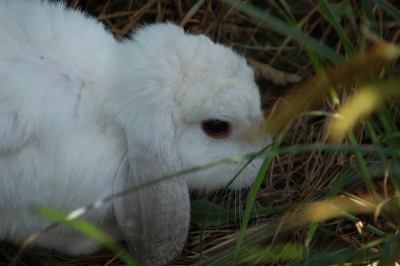
Rabbits, Other Small Pets and Lice
First, to allay any fears you may have, lice are specific to each individual species. In other words, lice from one type of animal cannot be transferred to another type of animal. Rabbits have their own rabbit lice. Lice from other species cannot be transferred to humans. If your rabbit or other small animal appears […]
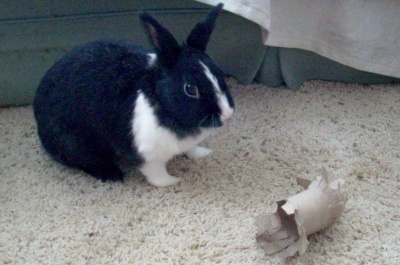
Hairballs in Rabbits
We’ve all heard about cats and hairballs, but did you know that rabbits can suffer from them as well. When rabbits groom themselves, they ingest some of the loose hair which often remains in the stomach. Rabbits cannot vomit as cats can, so the hair accumulates and can form a mass in the stomach called […]

Grooming a Rabbit
Rabbits are generally clean animals. They keep themselves well-groomed, but we should pitch in too. Short-haired rabbits should be brushed at least once a week. Rabbits shed about every 3 months and during the shedding period, they benefit from more frequent brushings, even daily. This will help to prevent hairballs from forming. Long-haired rabbits, such […]
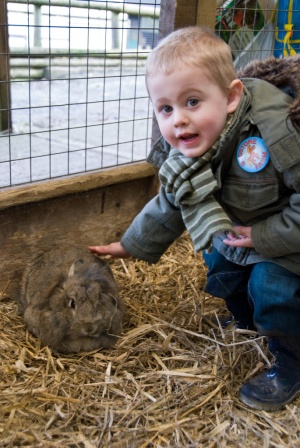
A Rabbit’s Personality
Rabbits, just like humans, have individual personalities. Adult rabbits are products of their genetics and experiences. Before rabbits reach the stage when hormones become active, they should be spayed/neutered which usually improves their personality. It should be noted that female rabbits run an 80% chance of uterine cancer if not spayed by 5 years old. […]

